Home>diy>Building & Construction>What Equipment Do Construction Workers Use
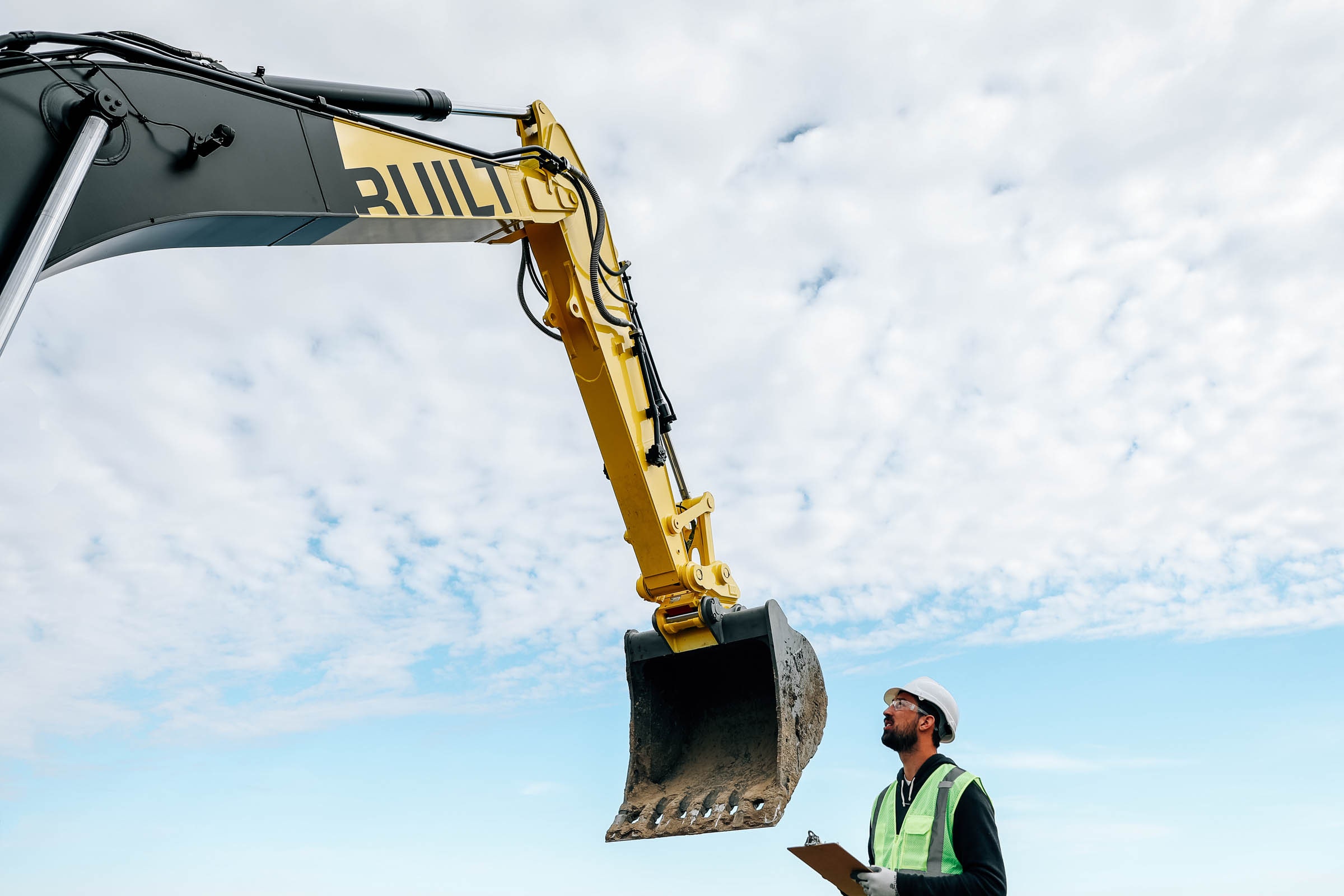

Building & Construction
What Equipment Do Construction Workers Use
Modified: October 19, 2024
Construction workers use a wide range of equipment for building construction, including excavators, cranes, bulldozers, and power tools. Learn more about the essential tools for efficient construction projects.
(Many of the links in this article redirect to a specific reviewed product. Your purchase of these products through affiliate links helps to generate commission for Storables.com, at no extra cost. Learn more)
Introduction
Construction workers play a vital role in the building industry. They are responsible for constructing buildings, infrastructure, and various structures that shape our cities and communities. To carry out their tasks efficiently and safely, construction workers rely on a wide range of equipment and tools.
From protective gear to hand tools, power tools, heavy machinery, and specialized equipment, construction workers utilize a diverse arsenal to complete their work effectively. In this article, we will explore the different types of equipment commonly used by construction workers and understand their significance in different construction tasks.
Whether you’re considering a career in construction, planning a DIY renovation project, or simply curious about the tools of the trade, this article will provide valuable insights into the equipment construction workers use on a daily basis.
So, let’s dive into the world of construction equipment and discover the essential tools that drive the building industry forward!
Key Takeaways:
- Construction workers rely on a diverse range of tools and equipment, from personal protective gear to heavy machinery, to ensure safety and efficiency in their tasks.
- Proper training, maintenance, and adherence to safety guidelines are crucial for using construction tools and equipment, mitigating the risk of accidents and promoting a safer working environment.
Read more: What Math Do Construction Workers Use
Personal Protective Equipment
When it comes to construction, safety is of utmost importance. Construction sites can be hazardous, with potential risks such as falling objects, heavy machinery, loud noises, and exposure to harmful substances. To protect themselves from these dangers, construction workers rely on personal protective equipment (PPE).
PPE includes a range of items designed to safeguard workers from injury or illness. Some of the essential PPE used in construction include:
- Safety helmets: These protect the head from falling objects and overhead hazards. They are designed to absorb impacts and prevent head injuries.
- Protective eyewear: Safety glasses or goggles shield the eyes from debris, chemicals, and sparks. They are an essential defense against potential eye injuries.
- Ear protection: Construction sites can be extremely noisy, and prolonged exposure to loud sounds can lead to hearing loss. Earplugs or earmuffs are worn to reduce the risk of hearing damage.
- Respiratory protection: Construction workers often encounter dust, gases, and fumes that can be harmful if inhaled. Respiratory masks and respirators filter out these contaminants, ensuring clean air for the workers to breathe.
- High-visibility clothing: Construction sites are bustling with activity, and it’s crucial for workers to be easily visible to others. Reflective vests and clothing with bright colors improve visibility and reduce the risk of accidents.
- Protective gloves: Construction workers handle various materials and tools that may cause cuts, abrasions, or chemical exposure. Protective gloves provide a barrier to protect the hands from such hazards.
- Safety boots: Construction sites are filled with heavy materials and equipment, posing a risk of foot injuries. Safety boots with reinforced toes and slip-resistant soles offer protection against potential hazards.
Construction workers should be trained on proper usage and maintenance of PPE to ensure its effectiveness. By wearing the appropriate protective equipment, workers can minimize the risk of accidents and injuries, creating a safer working environment.
Hand Tools
Hand tools are essential for construction workers as they are used for a wide range of tasks, such as cutting, shaping, fastening, and assembling materials. These tools are typically handheld and do not require any external power source. Here are some of the commonly used hand tools in construction:
- Hammer: The hammer is one of the most iconic tools in construction. It is used for driving nails into surfaces or removing them. Hammers come in various sizes and weights, and each is suitable for different tasks.
- Screwdriver: Screwdrivers are used to tighten or loosen screws and bolts. They come in different types, including flathead and Phillips head screwdrivers, and are available in various lengths and sizes to accommodate different screw types.
- Pliers: Pliers are versatile tools used for gripping, bending, and cutting wires and small objects. They come in different variations, including standard pliers, long-nose pliers, and adjustable pliers.
- Wrench: Wrenches are used for tightening or loosening nuts and bolts. They come in different sizes and styles, such as adjustable wrenches and socket wrenches.
- Measuring tape: A measuring tape is an essential tool for accurate measurements. Construction workers use it to measure distances, dimensions, and angles.
- Level: A level is used to ensure that surfaces, such as walls and floors, are straight and level. It helps in achieving precise and even construction.
- Chisel: Chisels are used for carving and cutting materials such as wood or stone. They come in various sizes and shapes to accommodate different tasks.
- Saw: Saws are used for cutting through materials such as wood, metal, or plastic. There are different types of saws, including hand saws, hacksaws, and coping saws, each designed for specific applications.
- Utility knife: Utility knives are used for cutting various materials, including cardboard, drywall, and insulation. They have retractable blades for safety.
These are just a few examples of the hand tools commonly used in construction. Each tool serves a specific purpose and plays a crucial role in getting the job done efficiently. Construction workers must be familiar with the proper handling and usage of these tools to ensure safety and precision in their work.
Power Tools
Power tools have revolutionized the construction industry by increasing efficiency and productivity. These tools are driven by electricity, battery power, or compressed air, providing more strength and speed than their manual counterparts. Here are some of the commonly used power tools in construction:
- Drill: A power drill is a versatile tool used for drilling holes in various materials, such as wood, metal, or concrete. It can also be used for driving screws with the help of screwdriver bits.
- Circular Saw: Circular saws are used for making straight cuts in materials like wood, metal, or plastic. They have a rotating circular blade that can be adjusted to different depths and angles.
- Reciprocating Saw: Reciprocating saws, also known as recip saws, are used for demolition work and cutting through materials like wood, metal, or plastics. They have a blade that moves back and forth rapidly.
- Jigsaw: Jigsaws are versatile tools used for making intricate curves and shapes in materials like wood, laminate, or plastic. They have a thin, reciprocating blade that moves up and down.
- Angle Grinder: Angle grinders are used for cutting, grinding, and polishing materials such as metal, tile, or concrete. They have a rotating disc that can be fitted with different cutting or grinding attachments.
- Nail Gun: Nail guns are used for quickly and efficiently driving nails into surfaces. They eliminate the need for manual hammering and come in different types, including framing nail guns and finish nail guns.
- Rotary Hammer: Rotary hammers are heavy-duty tools used for drilling and chiseling in materials like concrete or masonry. They combine the hammering action of a hammer drill with the rotating motion of a regular drill.
- Impact Driver: Impact drivers are designed for fastening screws and bolts. They deliver high torque with rotational force, making it easier to drive fasteners into tough materials.
- Air Compressor: Air compressors are used to power pneumatic tools like nail guns, staple guns, and impact wrenches. They convert electric or gas power into compressed air for efficient operation.
Power tools not only save time and effort but also enable construction workers to tackle challenging tasks with ease. However, it is important to receive proper training and follow safety guidelines while using power tools to prevent accidents or injuries.
Heavy Equipment
Heavy equipment plays a crucial role in construction projects, enabling workers to handle large-scale tasks efficiently. These machines are designed to perform heavy-duty operations and are operated by trained professionals. Here are some of the commonly used heavy equipment in construction:
- Excavator: Excavators are versatile machines used for earthmoving, digging, and trenching. They feature a boom, bucket, and cab mounted on a rotating platform, allowing for precise digging and material handling.
- Bulldozer: Bulldozers are powerful machines equipped with a large blade at the front. They are used for pushing and leveling soil, debris, or other materials during grading and landscaping operations.
- Crane: Cranes are used for lifting and moving heavy loads vertically. They come in various types, including tower cranes, mobile cranes, and truck-mounted cranes. Cranes are essential for tasks such as lifting construction materials and assembling structural components.
- Loader: Loaders are used for moving materials, such as soil, gravel, or debris, from one place to another. They feature a bucket attached to the front that can be used for loading and unloading materials.
- Backhoe Loader: Backhoe loaders combine the capabilities of a loader and an excavator. They have a front bucket for loading and a rear-mounted digging arm for excavation tasks.
- Dump Truck: Dump trucks are used for transporting loose materials, such as sand, gravel, or debris. They feature a hydraulically operated open bed that can be tilted to unload the contents.
- Road Roller: Road rollers are used for compacting surfaces, such as soil, asphalt, or concrete. They come in different sizes and feature heavy drums that exert pressure to achieve proper compaction.
- Concrete Mixer: Concrete mixers are used for mixing and transporting concrete. They have a rotating drum that blends the ingredients, ensuring a consistent and uniform mixture.
- Crusher: Crushers are machines used to reduce the size of large rocks or concrete debris. They are commonly used in demolition and recycling operations to process materials for reuse.
These heavy equipment pieces are instrumental in completing construction projects efficiently and effectively. They increase productivity, save time, and allow workers to handle large-scale tasks that would be impractical or time-consuming with manual methods.
It is important for operators to receive proper training and adhere to safety protocols while operating heavy equipment to ensure the safety of the crew and prevent accidents or damage to the machinery.
Read more: What Do Construction Workers Wear
Safety Equipment
In the construction industry, safety is paramount. Construction sites can be hazardous, with risks ranging from falling objects to chemical exposures. To mitigate these risks and protect the well-being of workers, a variety of safety equipment is used. Here are some of the essential safety equipment used in construction:
- Safety Harness: A safety harness is worn to prevent falls from heights. It consists of straps that secure around the body and a lanyard that connects to an anchor point. This equipment is crucial when working on scaffolding, elevated platforms, or roofs.
- Safety Gloves: Construction workers often handle sharp objects, chemicals, or hot materials. Safety gloves made from materials like leather, rubber, or Kevlar provide protection against cuts, punctures, chemical exposures, and abrasions.
- Safety Goggles: Safety goggles are worn to shield the eyes from flying debris, dust, chemical splashes, or excessive light. They provide a snug and sealed fit around the eyes to prevent any hazardous substances from reaching them.
- Hard Hat: Hard hats are designed to protect the head from falling objects, impacts, or debris. They are made of durable materials like plastic or fiberglass and have a suspension system inside to absorb the force of impacts.
- High-Visibility Vest: Construction sites are busy and often involve heavy machinery and vehicles. High-visibility vests, typically orange or yellow, are worn to ensure workers are easily visible to others, reducing the risk of accidents or collisions.
- Respiratory Mask: Construction sites can have airborne hazards such as dust, fumes, or toxic substances. Respiratory masks, such as N95 respirators, protect the worker’s lungs by filtering out harmful particles from the air they breathe.
- Ear Protection: Construction sites produce loud noise levels, which can lead to hearing damage over time. Earplugs or earmuffs are worn to attenuate the noise and protect the worker’s hearing.
- Safety Boots: Safety boots have reinforced toes and slip-resistant soles to protect the feet from falling objects, heavy materials, or puncture hazards. They provide stability and prevent foot injuries in construction environments.
- First Aid Kit: Every construction site should have a well-stocked first aid kit readily available. It contains essential medical supplies to provide immediate treatment for minor injuries or to stabilize a person until professional medical help arrives.
These safety equipment items are integral to ensuring the well-being of construction workers. Employers have a responsibility to provide and enforce the use of proper safety equipment to reduce the risk of accidents, injuries, and occupational hazards.
It is essential for workers to be trained on the correct usage of safety equipment and to comply with safety guidelines and regulations to create a safe working environment for all.
Surveying and Measurement Tools
Accurate measurements and surveying are critical in construction projects to ensure precise alignments, levels, and dimensions. Construction professionals use a variety of surveying and measurement tools to achieve accurate results. Here are some commonly used tools in this category:
- Tape Measure: The tape measure is a fundamental tool for measuring distances and dimensions. Construction workers use it to measure lengths, heights, widths, and other dimensions of materials or spaces.
- Theodolite: Theodolites are sophisticated instruments used for precise angle measurement and alignment. They are equipped with telescopes and calibrated scales to measure horizontal and vertical angles.
- Leveling Instrument: Leveling instruments, such as spirit levels or laser levels, are used to determine vertical or horizontal levels. They ensure that floors, walls, or other surfaces are perfectly level or at the desired slope.
- Total Station: Total stations combine electronic theodolites with distance measurement capabilities. They allow construction professionals to measure angles, distances, and elevations accurately, often with the aid of reflector prisms.
- Laser Distance Meter: Laser distance meters provide quick and precise distance measurements using laser technology. They are especially useful for measuring long or inaccessible distances with minimal effort.
- Measuring Wheel: Measuring wheels, also known as surveyor wheels, are used to measure long distances on the ground. They consist of a wheel attached to a handle and a counter that tracks the number of revolutions made.
- Inclinometer: Inclinometers are used to measure slopes or inclines accurately. They are commonly used in construction projects involving grading, road construction, or site leveling.
- GPS Equipment: Global Positioning System (GPS) equipment is used for precise location determination and positioning. Construction professionals use GPS devices to capture coordinates, establish boundaries, and reference existing site conditions.
- Surveying Rod: A surveying rod, also known as a measuring rod or grade rod, is used to measure distances and elevations. It is a long, graduated pole placed vertically or horizontally to take measurements.
Surveying and measurement tools are vital in ensuring accurate layouts, alignments, and dimensions during the construction process. By utilizing these tools, construction professionals maintain a high level of precision and adhere to specified design criteria.
It is important for workers involved in surveying and measurement tasks to receive appropriate training to ensure they can operate these tools effectively and produce accurate results for construction projects.
Always wear appropriate personal protective equipment (PPE) such as hard hats, safety glasses, gloves, and steel-toed boots on construction sites to protect yourself from potential hazards.
Lifting and Material Handling Equipment
In construction projects, there is often a need to lift and transport heavy materials and equipment. Lifting and material handling equipment are essential for these tasks, as they enable construction workers to move materials safely and efficiently. Here are some commonly used lifting and material handling equipment in construction:
- Forklift: Forklifts are versatile machines used to lift and transport heavy materials over short distances. They have two front prongs, or forks, that can be raised or lowered to lift and carry loads.
- Cranes: Cranes are powerful machines designed to lift and move heavy loads vertically and horizontally. They are essential for tasks such as lifting structural components, moving equipment, or hoisting materials to higher levels.
- Hoists: Hoists are used to lift and lower materials vertically. They consist of a pulley system and a chain or rope that allow controlled lifting and precise positioning of loads.
- Conveyor Systems: Conveyor systems are used to transport materials continuously and efficiently. They consist of belts, chains, or rollers that move materials along a predefined path, eliminating the need for manual carrying or lifting.
- Pallet Jack: Pallet jacks, also known as pallet trucks, are used to lift and move pallets. They have forks that fit under the pallet, allowing workers to easily maneuver and transport loads within a confined space.
- Skid Steer Loader: Skid steer loaders are compact, maneuverable machines equipped with a bucket attachment. They are used for lifting, carrying, and loading materials in small or tight spaces.
- Material Carts: Material carts are wheeled platforms designed for carrying and transporting materials across the construction site. They can have multiple tiers or compartments to organize and secure different items.
- Slings and Chains: Slings and chains are used for lifting and securing loads during material handling. They provide a reliable way to attach and lift objects, ensuring stability and safety.
- Pipe Rollers: Pipe rollers are devices used for moving and positioning pipes of various sizes. They reduce friction and allow workers to roll pipes over long distances with minimal effort.
- Roller Skates: Roller skates, equipped with ball bearings or wheels, are used to move heavy objects across smooth surfaces. They provide a smooth and controlled movement of loads, making it easier to transport them.
Lifting and material handling equipment are crucial for construction projects, as they enhance efficiency, reduce manual labor, and ensure the safe movement of materials. Proper training and adherence to safety protocols are necessary when operating and using these equipment to prevent accidents and injuries on the construction site.
Concrete and Masonry Tools
Concrete and masonry are integral components of many construction projects, requiring specialized tools for their preparation, placement, and finishing. Here are some commonly used concrete and masonry tools:
- Concrete Mixer: Concrete mixers are used to blend sand, gravel, cement, and water to create consistent and homogeneous concrete mixtures. They come in various sizes, from portable to stationary, and can be powered by electricity, diesel, or gasoline.
- Concrete Vibrator: Concrete vibrators are used to remove air bubbles and ensure proper compaction of freshly poured concrete. They are handheld or machine-mounted devices that create high-frequency vibrations to eliminate voids and improve the strength and durability of the concrete.
- Trowel: Trowels are flat-bladed hand tools used for spreading, leveling, and finishing concrete or mortar. They come in different sizes and shapes, including pointed, round-edged, and square-edged trowels, to achieve various surface finishes.
- Concrete Float: Concrete floats are used to smooth and level the surface of freshly poured concrete. They can be made of wood, magnesium, or aluminum, and typically have a flat or slightly curved bottom surface.
- Masonry Trowel: Masonry trowels are similar to concrete trowels but are specifically designed for working with mortar and laying bricks or blocks. They have a rectangular, flat blade that is used to spread and shape the mortar.
- Brick Hammer: Brick hammers, also known as bricklaying hammers, have a chisel-shaped end for cutting bricks and a blunt end for splitting them. They are used to shape or resize bricks during masonry work.
- Masonry Saw: Masonry saws are used to cut through concrete, bricks, or blocks. They have a diamond-coated blade that can make precise cuts through dense materials.
- Jointer: Jointers, or brick jointers, are handheld tools used to create grooves and indentations in mortar joints between bricks or blocks. They help improve the appearance and increase the strength of the masonry work.
- Concrete Screed: Concrete screeds are used to level and smooth freshly poured concrete surfaces. They typically consist of a long, straight board or a vibrating screed that is dragged across the surface to remove excess material and achieve the desired finish.
- Bull Float: Bull floats are large, flat tools used to flatten and smooth larger concrete surfaces. They are typically used after screeding to remove imperfections and provide a smooth finish.
Concrete and masonry tools are essential for the precise and quality construction of structures that use these materials. They enable construction professionals to manipulate, shape, and finish concrete and masonry elements with accuracy and efficiency.
Proper training and adherence to safety guidelines are imperative when using these tools to prevent accidents and ensure the longevity and integrity of concrete and masonry work.
Electrical Tools and Equipment
Electrical tools and equipment are essential for various construction tasks that involve electrical installations, wiring, and maintenance. They enable construction workers to handle electrical components safely and efficiently. Here are some commonly used electrical tools and equipment:
- Wire Strippers: Wire strippers are used to remove the insulation from electrical wires. They have cutting edges that can strip and expose the conductive wire without damaging it.
- Wire Crimpers: Wire crimpers are used to create secure and reliable electrical connections. They are designed to compress and crimp connectors onto the ends of wires for proper termination.
- Electrical Pliers: Electrical pliers, also known as lineman’s pliers, are versatile tools used for cutting, bending, and gripping electrical wires. They have a variety of features, including wire-cutting edges, gripping jaws, and crimping capabilities.
- Voltage Tester: A voltage tester is used to determine if electrical circuits or outlets are live or carrying electrical current. It helps to ensure safety by identifying potentially hazardous conditions.
- Electrical Tape: Electrical tape is used to insulate and protect electrical connections. It is made of vinyl or rubber and is highly resistant to heat, moisture, and electrical currents.
- Circuit Breaker Finder: A circuit breaker finder is a tool used to locate the corresponding circuit breaker for a specific electrical outlet or circuit. It saves time and effort by identifying the correct breaker without the need for trial and error.
- Cable Puller: Cable pullers, also called fish tapes or draw wire, are used to guide electrical cables through conduits or tight spaces. They are flexible tools that help route the cables safely and efficiently.
- Multimeter: A multimeter is a versatile device used to measure various electrical properties, including voltage, current, and resistance. It is a valuable tool for troubleshooting and verifying electrical components.
- Power Drill: Power drills equipped with appropriate drill bits are used for drilling holes in walls, wood, or metal surfaces. They are crucial for electrical installations and mounting electrical boxes.
- Wire Nuts and Connectors: Wire nuts and connectors are used to securely join electrical wires together. They provide a safe and reliable connection, preventing accidental wire disconnection or electrical hazards.
- Wire Fish Tape: Wire fish tape is a flexible, long, and narrow tool used to guide wires through walls, conduit, or other confined spaces. It makes wire installations or replacements easier and more efficient.
These electrical tools and equipment are essential for the safe and effective installation, maintenance, and troubleshooting of electrical systems in construction projects. It is vital to use these tools correctly and follow electrical safety protocols to prevent accidents, electrical hazards, and ensure compliance with electrical codes and regulations.
Plumbing Tools and Equipment
Plumbing is a crucial aspect of any construction project, involving the installation, repair, and maintenance of water supply and drainage systems. Plumbers rely on a range of specialized tools and equipment to perform their tasks effectively. Here are some commonly used plumbing tools and equipment:
- Pipe Wrench: Pipe wrenches are sturdy and adjustable wrenches used to grip and turn pipes or fittings. They provide a strong grip and leverage, making it easier to tighten or loosen threaded connections.
- Plunger: Plungers, also known as plumber’s helpers, are used to clear clogs in drains and toilets. They create suction to dislodge blockages and restore proper drainage.
- Pipe Cutter: Pipe cutters are used to cut pipes made of various materials, including copper, PVC, or steel. They provide clean, precise cuts without the need for sawing or excessive force.
- Plumber’s Snake: A plumber’s snake, or drain auger, is a flexible cable used to remove blockages in pipes. It can be manually operated or powered, allowing it to navigate through pipes and break up or retrieve obstructions.
- Pipe Fittings: Pipe fittings include various connectors, adapters, valves, and elbows used to join and redirect pipes. They ensure proper flow and connection between different sections of plumbing systems.
- Plumbing Tape: Plumbing tape, also known as Teflon tape or thread seal tape, is used to create watertight seals between threaded pipe connections. It helps prevent leaks and ensures a reliable connection.
- Plumbing Torch: Plumbing torches, often fueled by propane or butane, are used for soldering copper pipes and fittings. They produce a high-temperature flame for heating and joining metal components.
- Plumber’s Putty: Plumber’s putty is a pliable and moldable sealant used to create watertight seals around sinks, faucets, or drains. It remains flexible and resists water, making it ideal for plumbing applications.
- Pipe Threader: Pipe threaders are used to create threaded connections on pipes. They cut precise threads, allowing for the connection of various fittings, valves, or appliances.
- Plumbing Inspection Camera: Plumbing inspection cameras, also called borescopes or sewer cameras, are used to view and diagnose issues within pipes or sewer lines. They provide visual feedback to identify blockages, leaks, or corrosion.
These plumbing tools and equipment are essential for plumbing professionals to carry out their work accurately and efficiently. Each tool serves a specific purpose, from installation to repairs and maintenance, ensuring proper functionality and water flow within a construction project.
Plumbers must have a thorough understanding of these tools and equipment and follow proper plumbing techniques and safety guidelines to ensure the reliability and longevity of plumbing systems.
Carpentry Tools and Equipment
Carpentry is a craft that involves working with wood to construct structures, furniture, and other wooden elements in construction projects. Carpenters rely on a variety of specialized tools and equipment to shape, cut, join, and finish wood. Here are some commonly used carpentry tools and equipment:
- Handsaw: Handsaws are used to cut wood by hand. They have a sharp-toothed blade and are available in different sizes and types, such as crosscut saws and rip saws.
- Power Drill: Power drills are versatile tools used for drilling holes or driving screws into wood. They can be corded or cordless and come with various drill bit attachments.
- Chisel: Chisels are sharp-edged tools used for carving, shaping, and cutting wood. They are available in different sizes and shapes and can be used for precision work or heavy-duty tasks.
- Claw Hammer: Claw hammers are multipurpose tools used for driving nails into wood and extracting them with the curved claw end. They are essential for framing, construction, and general carpentry work.
- Tape Measure: Tape measures are used to take accurate measurements of wood pieces, ensuring precise cuts and proper fitting. They come in various lengths and have both metric and imperial markings.
- Square: Squares are used to ensure the accuracy of right angles. Carpenter squares and speed squares are commonly used for marking and checking 90-degree angles.
- Sander: Sanders are used to smooth the surfaces of wood by removing roughness or imperfections. They come in various types, including belt sanders, orbital sanders, and hand sanding blocks.
- Router: Routers are versatile tools used to shape and hollow out wood. They are equipped with a rotating cutting bit that allows for precise cuts, edging, and decorative designs.
- Nail Gun: Nail guns are pneumatic or electric tools used to drive nails quickly and efficiently into wood. They are widely used in framing, molding, and trim work.
- Carpenter’s Square: Carpenter’s squares, also known as framing squares, are L-shaped tools used for measuring, marking, and ensuring the accuracy of cuts and angles in carpentry projects.
- Woodworking Bench: A woodworking bench is a sturdy and flat surface used for cutting, shaping, and assembling wood. It is equipped with vises, clamps, and holdfasts to secure the workpiece during various operations.
- Woodworking Clamps: Woodworking clamps are used to hold wood pieces together during gluing, fastening, or shaping. They ensure stability and alignment while the adhesive dries or when making precise cuts.
These carpentry tools and equipment are essential for carpenters to carry out their work efficiently and produce high-quality woodwork. Mastery of these tools and understanding of carpentry techniques are crucial for crafting intricate and sturdy wooden structures, furniture, and decorative elements in construction projects.
Carpenters must ensure proper maintenance of their tools, use them safely, and follow best practices to achieve accurate and precise woodworking results.
Landscaping and Excavation Tools
Landscaping and excavation play a vital role in shaping outdoor spaces and preparing construction sites. Various tools and equipment are used to excavate, level, and beautify the land. Here are some commonly used landscaping and excavation tools:
- Shovel: Shovels are versatile tools used for digging, lifting, and moving soil, sand, gravel, or other materials. They come in different shapes and sizes, including square-point, round-point, and trenching shovels.
- Spade: Spades are similar to shovels but have a narrower and flatter blade. They are commonly used for edging, slicing through sod, or digging in tight spaces.
- Rake: Rakes have toothed prongs attached to a handle and are used for leveling soil, spreading mulch, or removing debris. They come in various designs, including garden rakes, leaf rakes, and landscape rakes.
- Wheelbarrow: Wheelbarrows are used to transport materials, such as soil, mulch, or plants, across the landscaping site. They consist of a single wheel, handles, and a tub-like container for holding the materials.
- Excavator: Excavators are heavy machinery used for digging, trenching, and moving large amounts of soil or debris. They have a bucket attached to a hydraulic arm that allows for precise excavation.
- Mini Excavator: Mini excavators are smaller versions of traditional excavators, ideal for maneuvering in tight spaces or for smaller landscaping or excavation projects.
- Lawn Mower: Lawn mowers are used to cut grass to a uniform height, maintaining a manicured lawn. They come in various types, including push mowers, self-propelled mowers, and riding mowers.
- Hedge Trimmer: Hedge trimmers are used to trim and shape hedges, shrubs, or bushes, ensuring a neat appearance. They feature sharp blades that move back and forth to create precise cuts.
- Chainsaw: Chainsaws are powerful tools used for cutting trees, branches, or logs. They are particularly handy for landscaping tasks that involve tree removal or trimming.
- Post Hole Digger: Post hole diggers are used to dig holes for installing fence posts, signposts, or other structural elements. They consist of two shovel-like blades that dig into the ground when squeezed together.
- Tiller: Tillers, also known as cultivators, are used to break up soil and prepare planting beds. They have rotating blades that turn and mix the soil, making it suitable for planting.
- Pruning Shears: Pruning shears, or hand pruners, are used for precise trimming of branches, flowers, or small plants. They provide clean cuts and are essential for maintaining the health and appearance of landscape vegetation.
These landscaping and excavation tools aid in preparing the land, creating desired terrain, and maintaining beautiful outdoor spaces. Using the right tools for specific tasks ensures efficiency and precision in landscaping and excavation projects.
It is crucial to operate heavy machinery, such as excavators, safely and with proper training. Additionally, regular maintenance and inspection of tools and equipment are essential for optimal performance and longevity.
Read more: What Do You Need To Be A Construction Worker
Conclusion
The construction industry relies on a wide range of tools and equipment to carry out various tasks efficiently and safely. Whether it’s protective gear, hand tools, power tools, heavy machinery, or specialized equipment, each tool serves a specific purpose and plays a crucial role in the construction process.
Personal protective equipment (PPE) ensures the safety and well-being of construction workers by providing protection against potential hazards. PPE includes safety helmets, protective eyewear, gloves, high-visibility clothing, and respiratory masks, among others.
Hand tools are essential for cutting, shaping, fastening, and assembling materials. Hammers, screwdrivers, pliers, and tape measures are just a few examples of the hand tools used by construction workers to accomplish their tasks with precision.
Power tools have revolutionized the construction industry, increasing productivity and efficiency. Drills, saws, nail guns, and power sanders are just a few of the power tools that make construction work faster and more accurate.
Heavy equipment such as excavators, bulldozers, and cranes are used for earthmoving, lifting, and transporting heavy materials. These machines significantly contribute to the efficiency and progress of construction projects.
In addition to the tools mentioned above, surveying and measurement tools, safety equipment, plumbing tools, carpentry tools, and landscaping tools all have their specific roles in construction projects. From measuring distances and leveling surfaces to installing plumbing systems and shaping wood, each tool contributes to a particular aspect of the construction process.
It is important to note that proper training, maintenance, and adherence to safety guidelines are crucial when using construction tools and equipment. Following these practices will mitigate the risk of accidents, ensure efficient work, and promote a safer working environment.
In conclusion, construction workers rely on a wide array of equipment and tools to accomplish their tasks effectively. From ensuring safety to completing intricate and complex tasks, these tools enable the construction industry to build, shape, and transform our world.
Frequently Asked Questions about What Equipment Do Construction Workers Use
Was this page helpful?
At Storables.com, we guarantee accurate and reliable information. Our content, validated by Expert Board Contributors, is crafted following stringent Editorial Policies. We're committed to providing you with well-researched, expert-backed insights for all your informational needs.
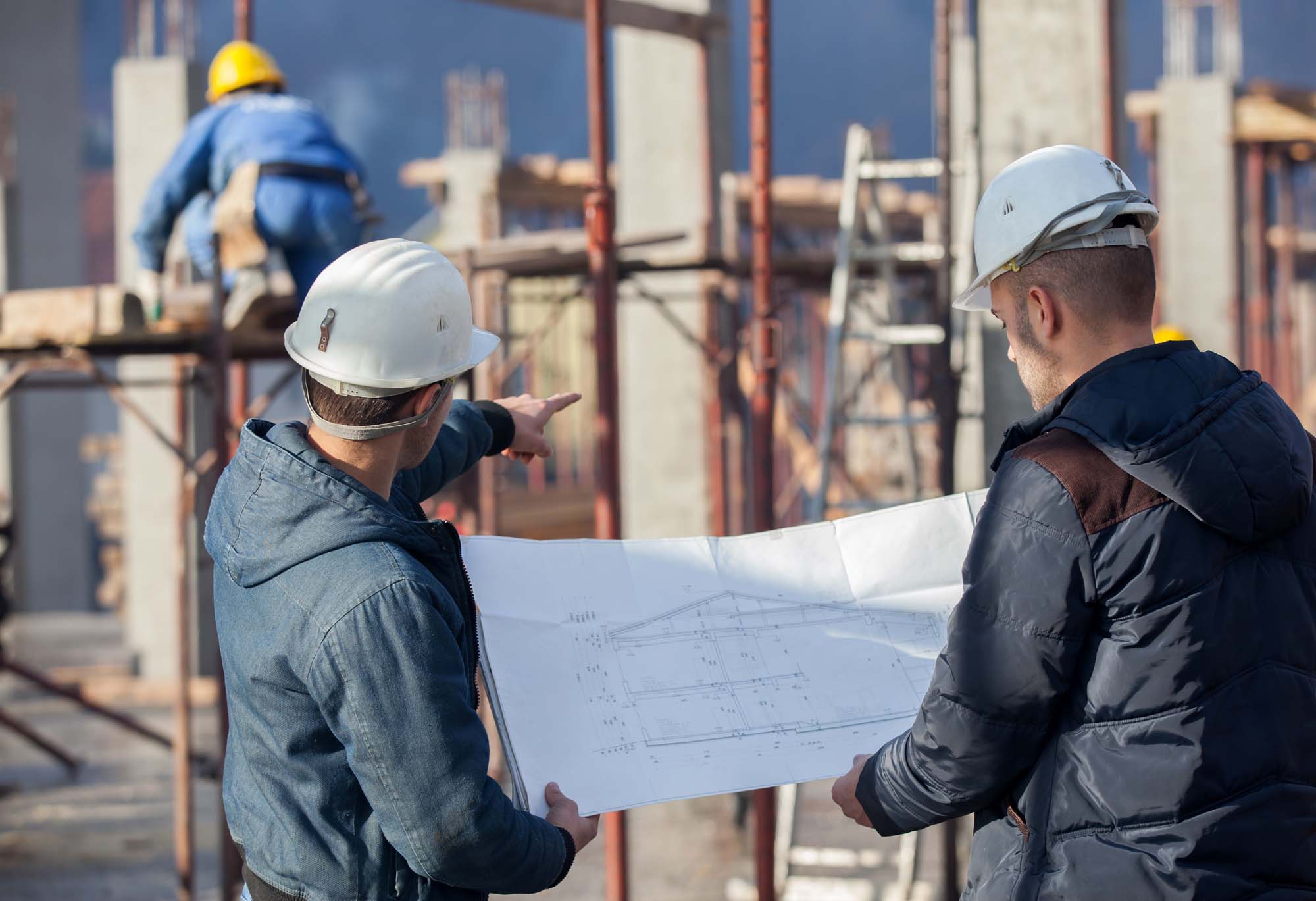





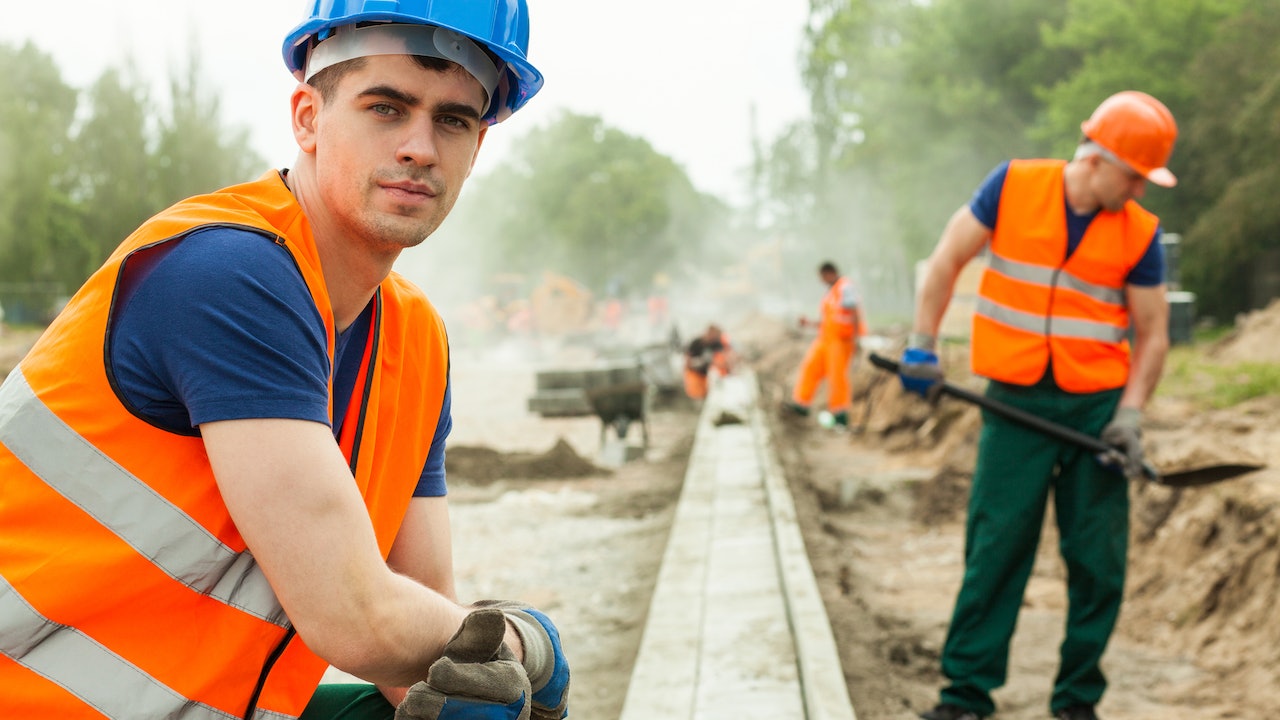

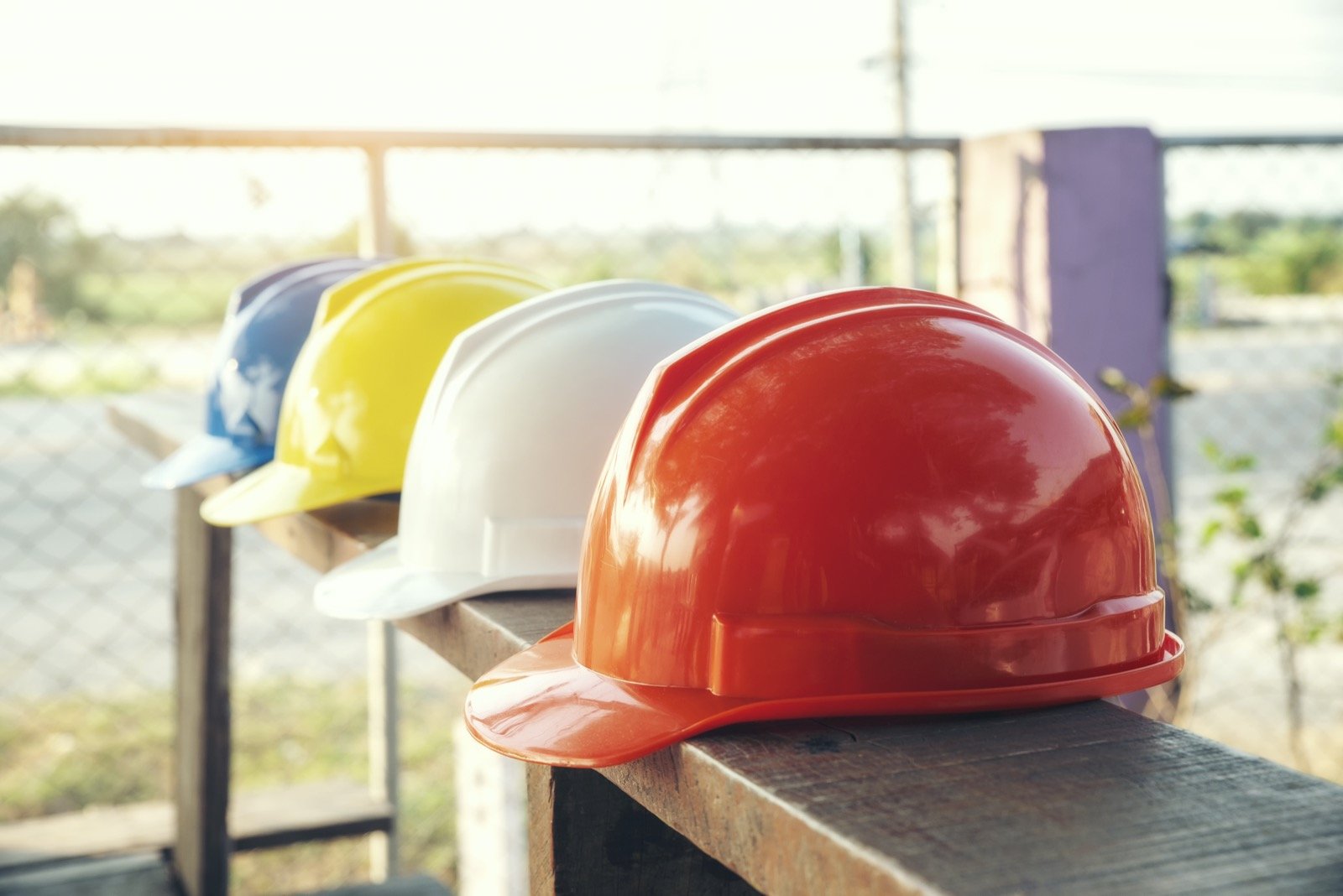
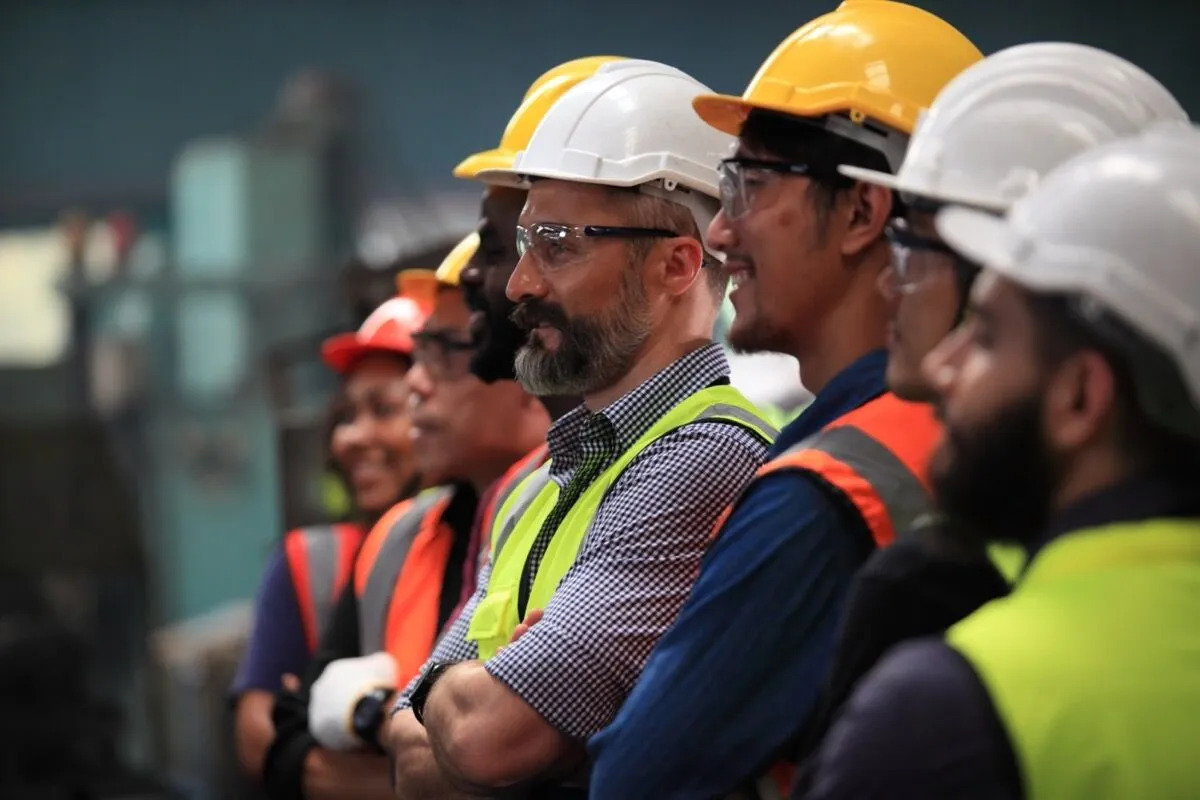
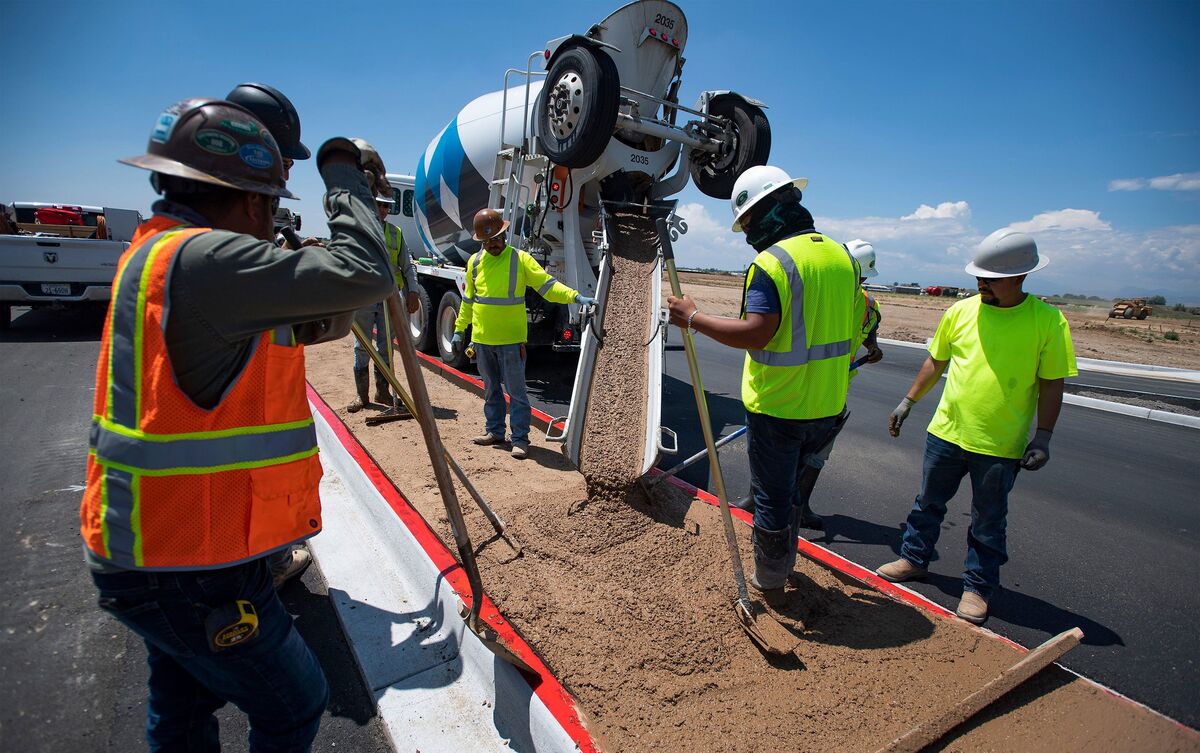
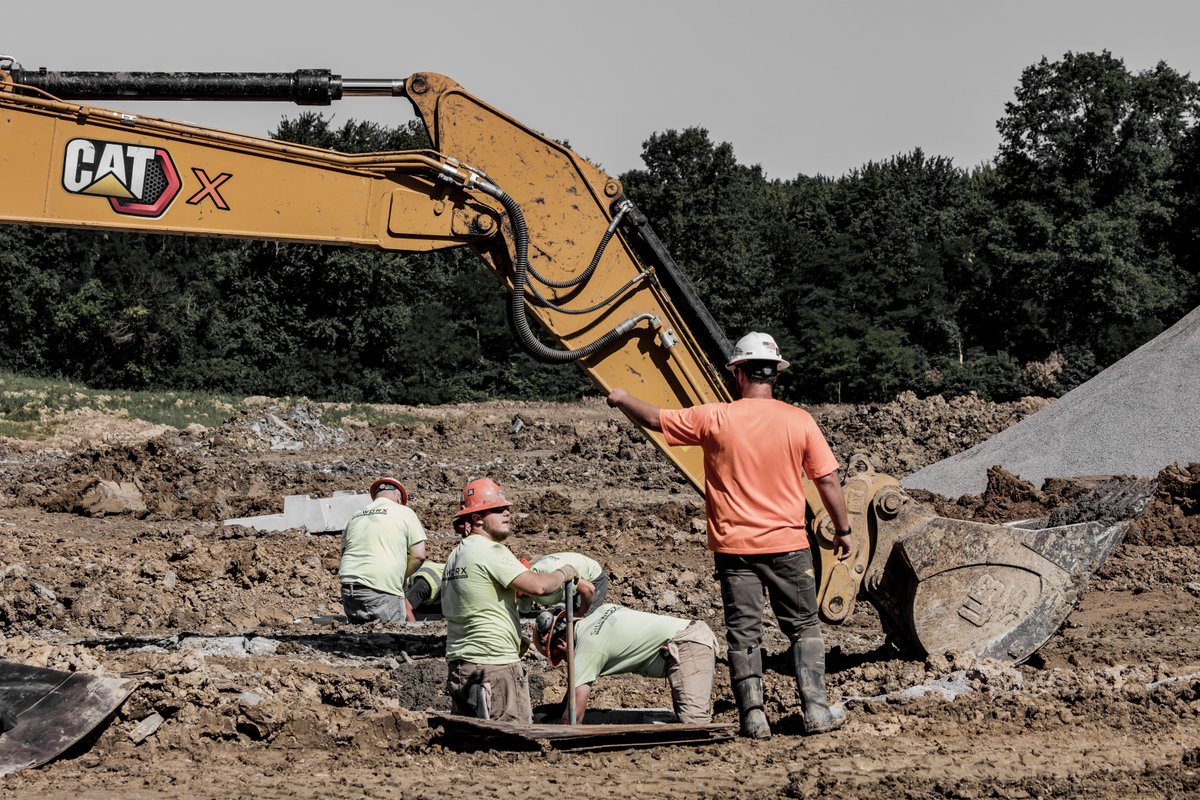

0 thoughts on “What Equipment Do Construction Workers Use”